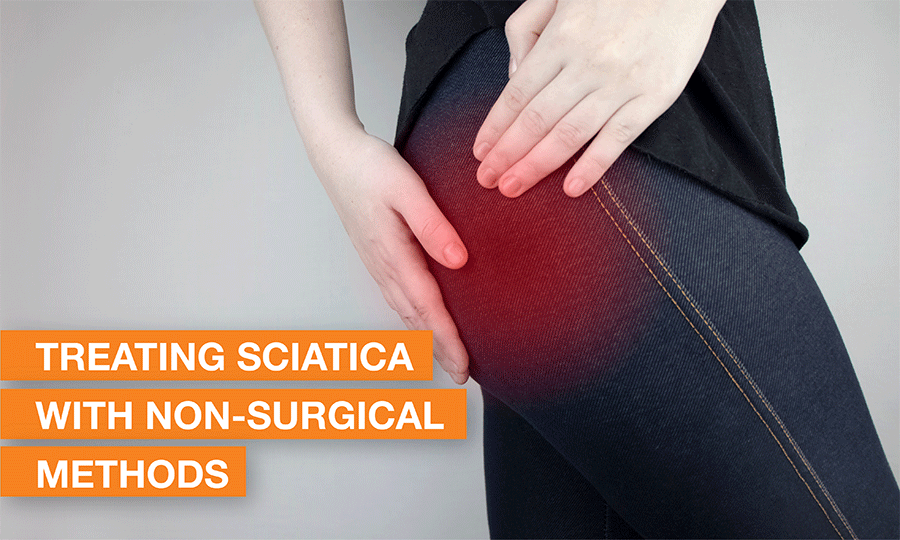
11 Jan Non-Surgical and Interventional Treatments for Sciatica
Sciatica, characterized by pain radiating along the sciatic nerve, can often be treated effectively without surgery. Treatment aims to reduce pain and inflammation while improving mobility.
Non-Surgical Options
- Physical Therapy: Customized exercise programs to improve flexibility, strengthen the muscles supporting the spine, and correct posture.
- Medications: Over-the-counter pain relievers, anti-inflammatories, and in more severe cases, muscle relaxants or stronger pain medications.
Interventional Options
- Epidural Steroid Injections: These injections deliver steroids directly into the epidural space to reduce inflammation and pain.
- Nerve Blocks: Injections of anaesthetic near the nerve can provide temporary pain relief, helping to identify the pain source.
Regenerative Medicine
- Platelet-rich plasma (PRP) Therapy: Involves injecting a patient’s own platelets to promote healing of the affected nerve and surrounding tissues.
- Stem Cell Therapy: Experimental but promising, using the patient’s stem cells to repair damaged nerve or disc tissue.
Minimally Invasive Procedures
- Ozone Discectomy or Ozone Therapy: Involves the injection of ozone gas into the intervertebral disc to reduce disc herniation and alleviate sciatic pain.
- Endoscopic Discectomy: A minimally invasive surgery where a small endoscope is inserted to remove or repair the herniated disc causing sciatic nerve compression.
- Microdiscectomy: A less invasive form of surgery where only the portion of the herniated disc pressing on the sciatic nerve is removed.
Holistic and Supportive Therapies
- Acupuncture: Can help relieve pain and improve function in some patients.
- Chiropractic Care: Adjustments and manipulations to alleviate nerve pressure and pain.
- Massage Therapy: Can provide relief from muscle spasms and improve circulation.
Lifestyle Modifications
- Exercise and Weight Management: Regular low-impact exercises and maintaining a healthy weight can reduce the strain on the spine.
- Ergonomic Adjustments: Proper posture and ergonomic workstations can help reduce sciatic pain.
Each patient’s situation is unique, and treatment should be tailored to individual needs. These therapies can be used alone or in combination for effective management of sciatica. Always consult with a healthcare professional for a diagnosis and personalized treatment plan.
Dr Santhosh Jacob
Orthopedic & sports surgeon
Specialist in Minimally Invasive Surgery

